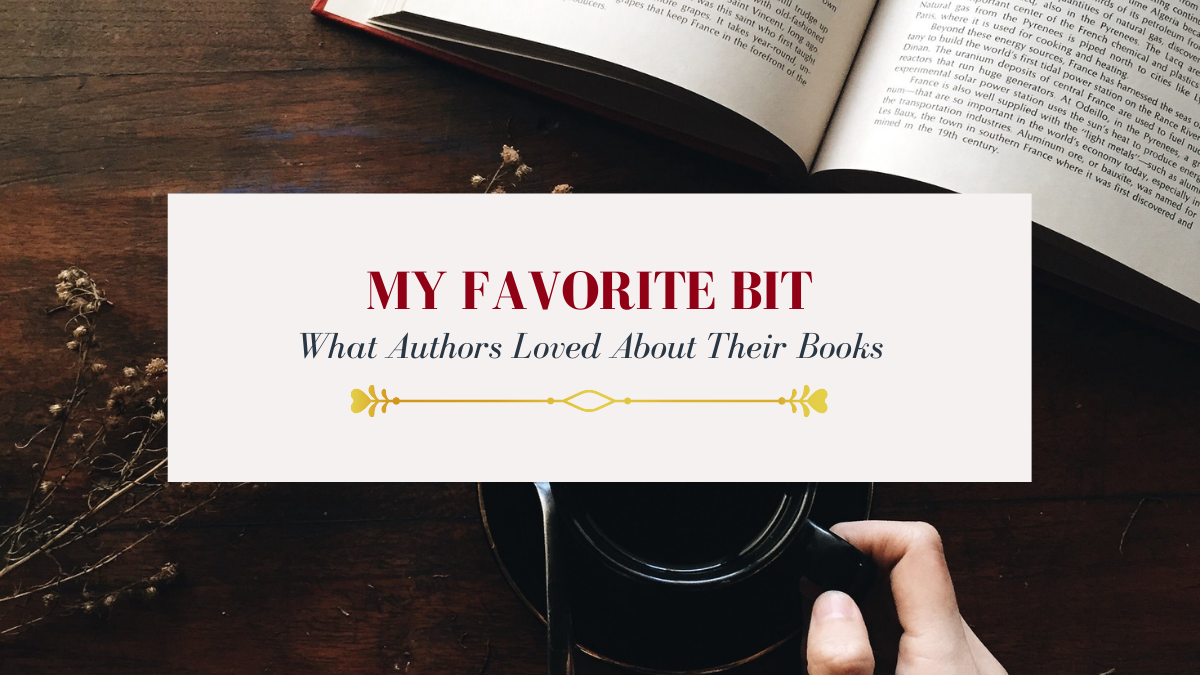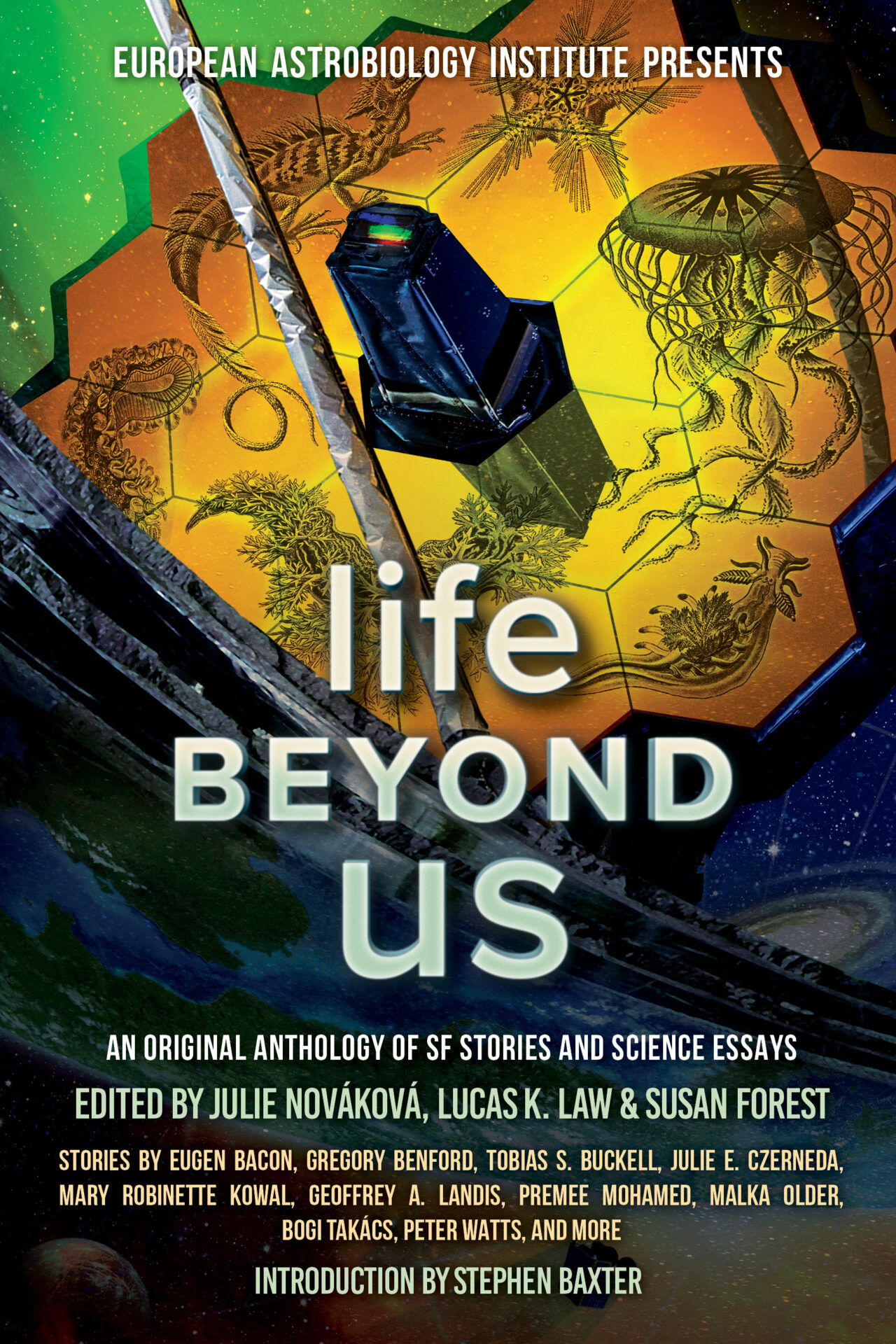
Julie Novakova is joining us today to talk about the anthology she edited, Life Beyond Us. Here’s the publisher’s description:
What would life be like if it evolved in a cold ocean beneath an impenetrable shell of ice? Or on a world whose haze obscured any view of the universe beyond? Is there a common template for life, or can we expect to find fragile silicon creatures drifting in seas of liquid nitrogen? How would finding alien life change our society?Life Beyond Us, a new anthology by the European Astrobiology Institute and Laksa Media, depicts the exciting quest for finding alien life in 27 science fiction stories and 27 science essays.
What’s Julie’s favorite bit?

Julie Novakova
Ever since I was little, one of my favorite evening pastimes was sticking my head out of the window and staring at the sky, picking one of the pinpricks of light that made it through the city lights and wondering whether it too had planets, life, civilization; whether someone, possibly, was looking back across the unimaginable distances.
From a little nerd, I grew up to be a big nerd; scientist, science fiction writer and editor. And I wanted to share my love for science, all the exciting questions it posed and beauty it revealed. After the European Astrobiology Institute was founded and I found myself in the outreach team, a way to bring science closer to the people came naturally to me: let’s go through science fiction. Stories engage and excite, they make people curious – and so why not compile an anthology of science fiction stories accompanied by short popular science essays exploring the themes of each story?
Thus, Life Beyond Us was born, and eventually ended up an almost 600 pages long tome containing twenty-seven stories and twenty-seven essays. And while the common theme we used in soliciting the original stories was astrobiology, one more concrete theme, though, has emerged and unifies the stories: Communication. And that is my favorite bit.
The stories are set in different times, from alternate past across the present and very near future all the way to exotic far futures; some stay firmly on Earth, while others venture across the galaxy; some let us meet alien civilizations, while others search for extra-terrestrial life or find simple organisms; some let us feel thrill, even fear, while others are full of joy. Yet you can find the theme of communication, in one way or another, to be crucial in each and every one of them.
It starts with communication between people with different agendas, be it engineers, scientists and corporate officers facing a grave dilemma (Eric Choi’s “Hemlock on Mars”), a scientist-turned-pilot wishing to go back to her astronomy career and a lead scientist failing to understand her situation (Mary Robinette Kowal’s “Still As Bright”), a woman who feels out of place everywhere and her peers (Eugen Bacon’s “Human Beans”), a rescue mission scientist and her family in Renan Bernardo’s “The Dog Star Killer”, a tracker, a power-hungry businessman and rich hunters in a part Earth-based, part alien wilderness (Deji Bryce Olukotun’s “This is How We Save Them”), two lovers changed by war and space in Arula Ratnakar’s “Spiral”, or two curious scientists alone on a planetary science mission in Geoffrey A. Landis’ “Cloudskimmer”.
Communication with fellow humans, naturally, continues to be important in all stories with human characters, but most stories deal with the speculative challenge of getting across to other life. Lucie Lukačovičová’s “Devil in The Deep” and Jana Bianchi’s “Deep Blue Neon” introduce strange life forms on Earth – could they possibly be intelligent and trying to tell us something? Both find exotic, yet believable forms of communication.
In G. David Nordley’s “Titan of Chaos”, the protagonists have to persuade a truly Titanic worm to open its maw as well as to solve an all too human attempted-murder mystery. B. Zelkovich shows us a different Titan in “The Lament of Kivu Lacus”; while trying to communicate with a local whale-like creature, a gaping chasm grows between the pair of present scientists. Elsewhere, such chasms within a single species are innate: Rich Larson’s “Heavy Lies” alien protagonist can manipulate her co-specifics, but never meaningfully communicate with them both ways; could any human ever be as lonely?
Attempted first contact plays out in very different ways in “Spider Plant” by Tessa Fisher, “The Mirrored Symphony” by D.A. Xiaolin Spires, “Cyclic Amplification, Meaning Family” by Bogi Takács, “The Sphinx of Adzhimushkaj” by Brian Rappatta and “The Dangers We Choose” by Malka Older. They show that we might have trouble even identifying what is an organism, let alone whether it is sentient and intelligent – and whether we can achieve some information exchange. Perilous times ahead!
Perilous indeed, in Tobias S. Buckell’s “The Last Cathedral of Earth, in Flight”, where an early attempt at first contact ended catastrophically. Are we to fear threats, “dark forests” with dangers lurking within, or should we try to make our presence known? The hero of Valentin Ivanov’s “The Secret History of the Greatest Discovery” hopes she has discovered someone else trying to advertise their existence to us – first contact from the other side, across the interstellar void. In “Lumenfabulator” by Liu Yang (translated by Ladon Gao), someone is listening to our messages – and even if they wouldn’t really understand them and use them to make art, does it count?
Would we make first contact, though, or would it be spacefaring AI, like in Gregory Benford’s “The Diaphanous” – a human-made inhuman intelligence meeting an alien intelligence and urgently needing to find common ground? Could it use human art and science to achieve it? Urgency also fuels communication efforts in Premee Mohamed’s ticking-clock scientific mystery “The Far Side of the Door”, a lone scout’s survey mission in “Ranya’s Crash” by Lisa Jenny Krieg (translated by Simone Heller), and Tomáš Petrásek’s survival story “The World of Silver”. But attraction can be just as powerful reason to connect, like in “Third Life” by Julie E. Czerneda.
Two stories I left for last, because the theme of communication lies at their very heart. Simone Heller tells her “Forever The Forest” from the perspective of a sentient tree, a part of the joint Conversation of a whole intimately interconnected forest. Could such a being ever begin to comprehend a motile solitary creature, such as a crash-landed astronaut? Its attempts at understanding, assistance and communication are sweet, but its perspective so different from ours – would a human ever notice if a tree was trying to convey something? Despite the chasm caused by two vastly different perceived environments and bodies shaping our modes of communication, Simone’s poetic story offers reasons for hope.
Hope is all that Ondrej Bohaty, the hero of Peter Watts’ “Defective”, has left. He has the impossible task of trying to talk to beings who aren’t even biological, but whose attempts at entering the solar system are threatening life on Earth – of whose existence they probably aren’t even aware. He’s changed himself countless times, altered his neurochemistry, rewired himself – to talk to orcas, AIs, even fungus. Yet this might be beyond his reach – same as trying to convince his human peers to avoid an option that amounts to genocide, should his interspecies communication efforts be in vain. But some communications are bound to fail…
I loved how the following passage from “Defective” nailed some of the key issues with interspecies communication, not necessarily with space aliens: “Over the years I have come to regard language itself as a kind of violence. A straitjacket, at best: a square hole into which humanity would force any shape, indifferent to the meaning and nuance that might be scraped away in the process. Apes flapping their fingers in parodies of ASL, parrots twisting their tongues around human speech, dolphins presented with touchscreens or glorified Morse. We like to pat ourselves on the back whenever our captives manage to squeeze themselves into these boxes, as if debasement somehow scales to intelligence. … Can it talk? …why should it want to? Why would dolphins, for example, use words to describe emotional states when they can feel the echoes of their podmates’ inmost selves, map out their fellows’ heartbeats and heartaches in three-dimensional ultrasound? What use is there for nouns and adjectives among solitary cephalopods who paint pictures on their skin, change shape and texture, turn their whole bodies into dioramas?”
So far, I only mentioned the stories, but the science essays often deal with communication too, be it radio signals, biochemical means or trying to understand animals on Earth. All the pieces of Life Beyond Us remind us how crucial communication is for us to even share a future together, and how different modes of perception, processing speed, body traits and environments might possibly halt attempts at finding common ground at the very start. But often, they also show how we might overcome these chasms. We build bridges to overcome them (be it by listening closely, building machines or changing ourselves) and hope they would hold; as we do in our lives, in each story, to bridge the smaller distances between us.
LINKS:
European Astrobiology Institute (EAI) website
Twitter: Julie, EAI, Laksa Media
BIO:
Story authors: Eugen Bacon, Gregory Benford, Renan Bernardo, Jana Bianchi, Tobias S. Buckell, Eric Choi, Julie E. Czerneda, Tessa Fisher, Simone Heller, Valentin D. Ivanov, Mary Robinette Kowal, Lisa Jenny Krieg (translated by Simone Heller), Geoffrey A. Landis, Rich Larson, Liu Yang (translated by Ladon Gao), Lucie Lukačovičová, Premee Mohamed, G. David Nordley, Malka Older, Deji Bryce Olukotun, Tomáš Petrásek, Brian Rappatta, Arula Ratnakar, D.A. Xiaolin Spires, Bogi Takács, Peter Watts, and B. Zelkovich
Essay authors: Jacques Arnould, William Bains, José A. Caballero, Dimitra Demertzi, Martina Dimoska, Tessa Fisher, Dennis Höning, Valentin D. Ivanov, Fabian Klenner, Nina Kopacz, Geoffrey A. Landis, Natuschka Lee, Ania Losiak, Stephen Francis Mann, Connor Martini, Tony Milligan, Philippe Nauny, Julie Nováková, Erik Persson, Tomáš Petrásek, Joanna Piotrowska, Giovanni Poggiali, Amedeo Romagnolo, Stefano Sandrelli, Floris van der Tak, Jan Toman, Sheri Wells-Jensen, and Raymond M. Wheeler
Introduction: Stephen Baxter, Foreword: Julie Nováková, Afterwords: Wolf D. Geppert; Lucas K. Law & Susan Forest
Julie Nováková is an evolutionary biologist by study, active in science education and outreach, and author, editor and translator of speculative fiction. Her stories and translations appeared in Clarkesworld, Asimov’s, Analog, Tor.com, F&SF and elsewhere.
Lucas K. Law is a Malaysian-born editor and author who divides his time and heart between Calgary and Qualicum Beach. He edits Laksa Media’s award-winning anthology series (with Susan Forest—Strangers Among Us, The Sum of Us, Shades Within Us, Seasons Between Us—and with Derwin Mak, Where the Stars Rise).
Susan Forest is the author of (Canadian SF&F) Aurora Award-winning Bursts of Fire and the Addicted to Heaven novel series, as well as over 25 internationally published short stories. She edits an award-winning anthology series for Laksa Media. She is the past Secretary for the Science Fiction and Fantasy Writers of America (SFWA).
